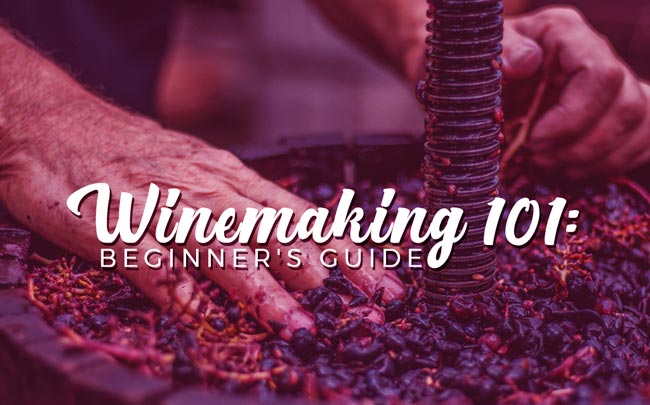Have you ever wondered how your favorite wine or liquor from the Philippines ends up in your glass? Winemaking is considered to be both science and art; a part of the identity of the winemaker. Pursuing and creating the perfect bottle of wine is what drives numerous vineyards all over the world every single day.
Each bottle of wine starts with the winemaker selecting and planting the right kind of grapevine. This step is crucial because it will affect the rest of the winemaking process but, the real magic happens once the grapes are picked and sent on their way to be processed. Here’s the inside scoop on how your favorite wine is crafted.

Harvesting the Fruits
The journey begins with harvesting the grapes from the vines. Some vineyards still closely follow tradition and harvest the fruits by hand. The fruits are also picked early in the morning as fast as possible so they remain chilled for a long time.
The grapes are then collected in 20-pound yellow collection buckets called lugs so the fruits stay intact until they are ready for production. Grapes are crushed and processed the same day they are harvested.
So how do these vineyards know when the grapes are perfect for picking? They consider various factors such as Brix or sugar content, acidity, and pH level. But most straightforward of all, they simply taste the fruit too.
Grapes for white wines are tested two times every week at the beginning of August and then more frequently as harvest time comes close. Grapes for red wine get the same treatment although it starts during early September.
Do Not Miss to Read:
- Cheap Wines That Taste Awesome
- Win Over Everyone’s Heart by Celebrating Moments with Delicious Cake
- 7 Best Ways to Boost Energy Levels
Crushing and Pressing
Crushing might seem so rough but in reality, crushing is a very gentle process for the delicate fruits. A state-of-the-art crushing and destemming machine expertly remove all the stems and lightly crushes the fruits to prepare for pressing.
The pressing process is done entirely in an oxygen-free environment using a bag press and nitrogen gas to protect the fruit juice from oxidation. This results in a pure and delicious grape juice that is then sent on its way to fermentation.
Fermenting
The fermentation process happens in temperature-controlled, stainless steel tanks. Depending on the kind of grape or resulting wine, yeasts are added to convert the sugars into alcohol. This process only stops when the right sugar and alcohol level for each type of wine is achieved.
Clarifying
This is the process that removes the solids from the wine. Some producers let the wine clarify on its own throughout the winter. Coal extracts are then added to aid in this natural process and help settle some of the sediments that need to be removed.
While most processing plants use refrigeration systems, some vineyards are fortunate enough to take advantage of the cold temperatures of their location. All they have to do is to throw the doors of their winery open to cool their storage tanks.
Aging and Bottling the Wine
Most red wines are aged in 100 percent French oak barrels. These reds are then aged in these 55-gallon barrels for anywhere between 12 to 24 months. White wines are stored and aged in stainless steel for a shorter period of time depending on the type. The wines are also bottle-aged as appropriate for anywhere between six weeks up to a year.
Different variables are taken into account as the wine ages. They are regularly taste-tested to make sure that the flavor profile is perfect. Only then is the wine sent for filtering and bottling, finalizing the process of winemaking.
Key Takeaway
Winemakers take great care, from beginning to end, to make sure that their wines live up to the expectations of their customers. Living up to these standards means that they will have to produce high-quality wines and liquors in the Philippines with superior taste.
The next time you find yourself with a glass in hand and enjoying a great bottle of wine, you can now have a better appreciation of the sheer effort it took to get it there.